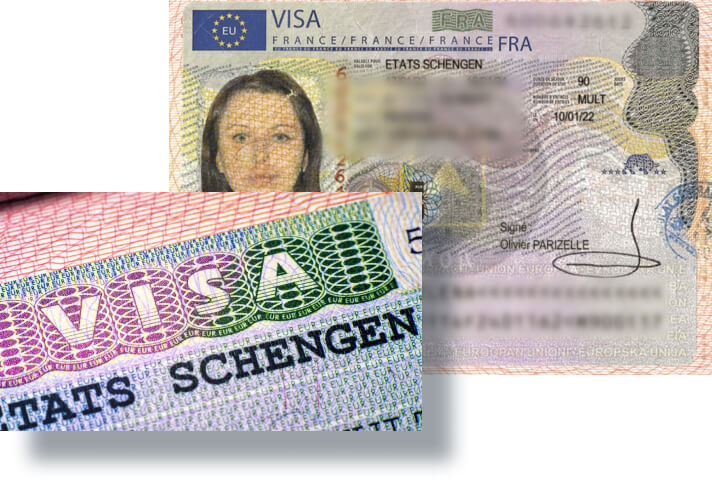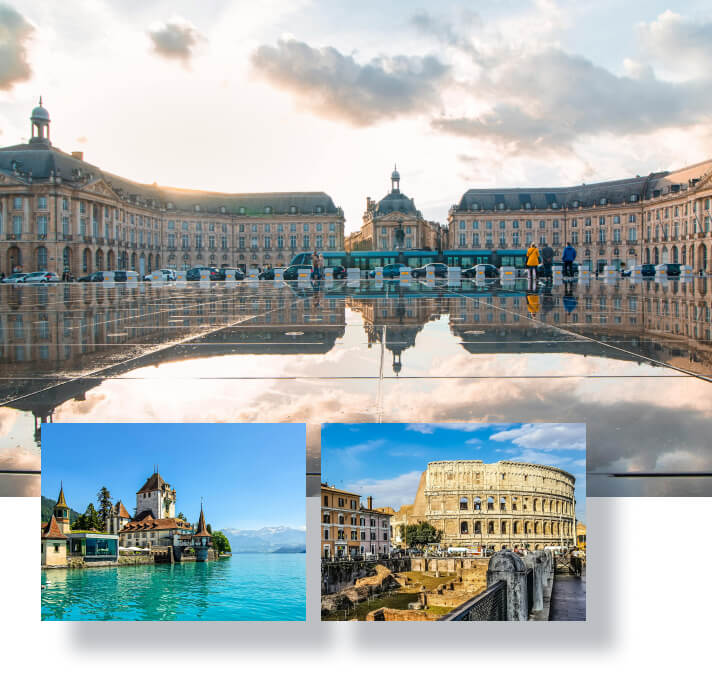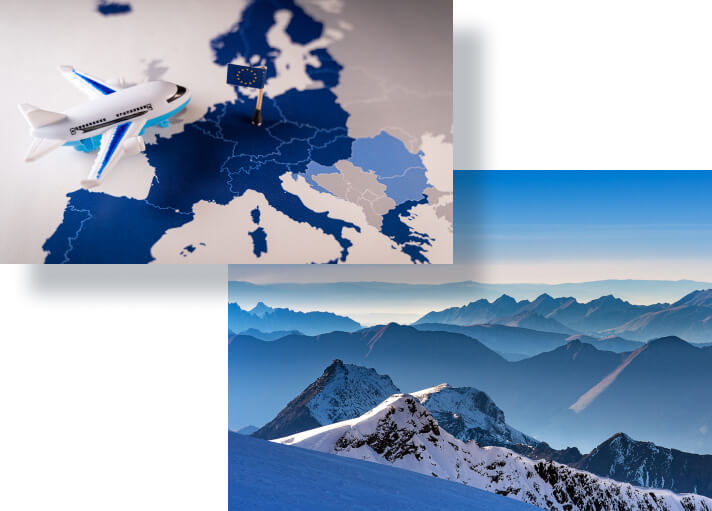Schengen Visa: What Types There Are
and Which One You Need

A tourist travelling across most European countries has a great chance to experience them all with but a single visa. Such is the benefit of the Schengen visa – that you can gain entrance into one country and be allowed to go to several dozen others without the need to gather documents and apply for a permit in each one.
However, the multitude of types of Schengen visas available can be a little overwhelming. What are the differences? What kind of visa do you need specifically?
Let’s delve deeper into the intricacies of various types of entry visas.
Types of Schengen visas
Countries beholden to the Schengen Agreement provide a unified visa that allows its holder to enter any of them. For example, if you have obtained a Spanish visa, you can travel not only to Spain, but also to France, Portugal, and many other countries.
There are three main types of Schengen visas granted to foreign visitors:
- Single-entry;
- Double-entry;
- Multiple-entry.
While their names may sound rather self-explanatory, it is better to have a firm grasp on what each type entails to know precisely which one you will need for your travels.
Single-entry Schengen visas
This is the most basic kind of visa provided. They grant you the right to enter the Schengen Area just once and stay there for the duration of your visa’s validity.
It must be emphasised that once you have left the Schengen Area, you will not be able to return without getting a new visa first – even if your previous one is still valid.
Therefore, this type is best suited to going abroad when you do not plan to travel extensively but just need to spend some time within the confines of the Schengen countries.
You have to bear in mind that the borders of the Schengen Zone do not align perfectly with those of the European Union – for example, you can go to France with your French visa, then travel to Switzerland which is, while not a EU member, a Schengen country, and from there to Germany all on the same single-entry visa.
But if after your arrival to France you were to turn south instead and take a scenic route through Andorra to go to Spain, you would not be able to do that, as Andorra, although landlocked by the Schengen Area, is not itself part of it. Therefore, entering it would make your single-entry visa lose its validity at once.
Double-entry Schengen visas
To alleviate that inconvenience, you may opt instead for a double-entry visa. With the benefits that it grants, you can absolutely fulfil your dream of seeing France, Andorra, and Spain all in one trip – or any other combination of countries that require you to leave the Schengen Zone once.
Moreover, with a double-entry visa you can also visit a Schengen state of your choice, then return home, and then make a second trip to the Area whenever you desire – as long as it stays within the duration of your visa, of course.
Multiple-entry Schengen visas
You have a valid German visa in your passport. You arrive in Germany, spend a weekend there, then you travel to the Republic of Ireland – another oddity, as it is a EU state but not a Schengen Zone one – then to Spain, and then you fly home to the UAE. Then, without applying for a new visa, you are permitted to re-enter the Schengen Area.
This is exactly what a multiple-entry visa does. For as long as it stays valid, you can leave and come back to any of the Schengen countries as you please, making this visa type ideal for people who want to travel far and wide.
What type should you choose?
There is no one-size-fit-all solution here. What visa type you will obtain depends heavily on your plans, preferences, and budget.
While the multiple-entry option is indeed the most beneficial one in the long run, it does not mean the other two are without their use.
For one, a single-entry visa is the easiest to get. It costs the least amount of money and requires the fewest documents to be collected before you can apply. If you are going on a business trip or do not plan to exit the Schengen Area before you return home for good, this option can be great for you.
A double-entry visa is also good for people on tight itineraries – for those who know their route for certain and are sure they will need to leave the Schengen Zone once while their visa stays valid and then re-enter it. It also presents the optimal price-to-benefit ratio on average.
And while a multiple-entry visa provides the most abundant travel opportunities, we would be remiss not to mention that it also has the most requirements as well as the largest cost. It is great when you want to go on several journeys to Europe but can be more difficult to obtain.
What is important is that you decide a bit ahead of time, because once you’ve got – as an example – a single-entry visa, you may be required to wait until it is no longer valid before you can apply for a multiple-entry one. So choose wisely!
Whatever your case is, Smart System Holidays will be happy to help you with getting a Schengen visa in the quickest time possible.






 WhatsApp
WhatsApp


